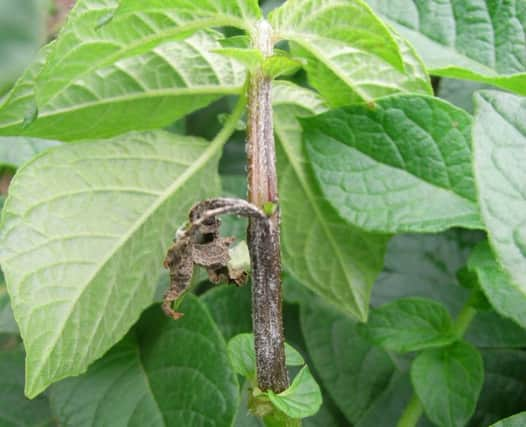Perfect storm for potato blight


With crop values creeping up, the need to protect is becoming ever more important to growers.
However, this season’s blight threat has triggered the need for tighter spray intervals – indeed five days between applications is common – which is leading to increasing demand and potentially some product shortages in the range of fungicides available to fight potato blight.
Advertisement
Advertisement
“It’s imperative not to get caught short,” explains Morley Benson, key account manager at Certis.
“Valbon is a very robust fungicide, and we’re confident that our supply levels of this product are sufficient enough to support growers through this high disease period.”
When deciding how to tackle blight, farmers will not only need to consider variables such as product combinations and level of resistance, but also application parameters such as timing and spray frequency, explains Mr Benson.
“The co-formulation of two key actives, benthiavalicarb and mancozeb, found in Valbon, effect different stages of the blight lifecycle, and minimise the risk of resistance developing. Mancozeb also proves useful when protecting against early blight, Alternaria.
Advertisement
Advertisement
“Although it does contain some curative properties, Valbon works most effectively as a protectant, and should be applied before any signs of blight are detected.”
At this time of year, potato growers will be regularly checking for warnings of blight risk and with the wide availability of useful tools such as Blight Watch, they can be better prepared.
“We always advise growers to have a tailored approach to blight, that starts from day one and is continued throughout the year,” says Mr Benson.
“In particular, we would recommend using Valbon in a tank mix with our adjuvant ZinZan.
Advertisement
Advertisement
“Practical experience and trials data has shown that ZinZan improves the mobility of Valbon and is proven to underpin its performance in terms of both protectant and curative activity. It’s also a cost-effective addition to the mix.”
Whatever the product of choice, it is advised that farmers continue to be vigilant to the warning signs of the disease, and ensure they’re introducing robust spray intervals, urges Mr Benson.
“I understand that it can sometimes be tempting to extend the spray window as a route to cutting costs, but I would strongly recommend against doing this, even more so during periods where there is a high risk of blight.”